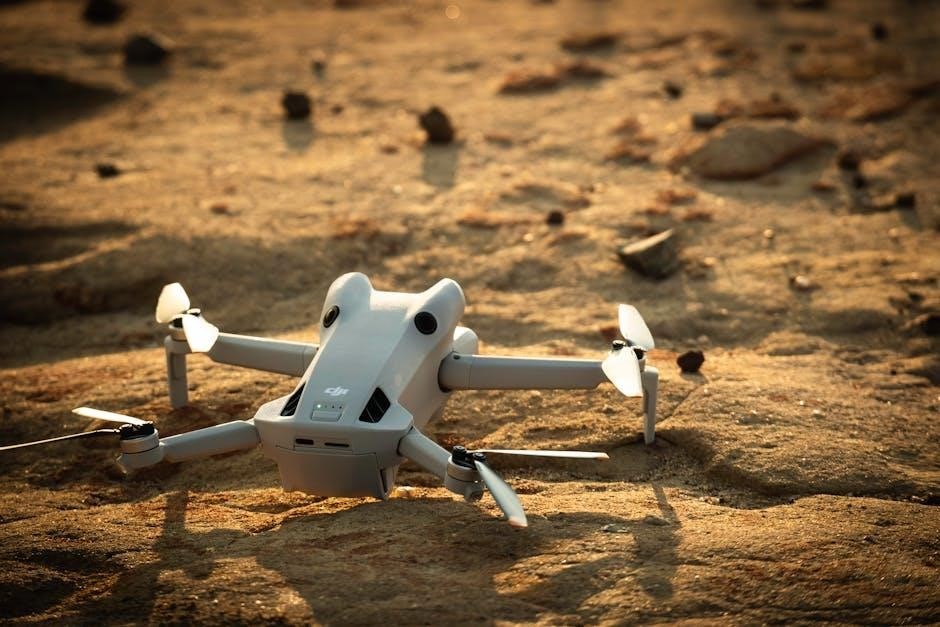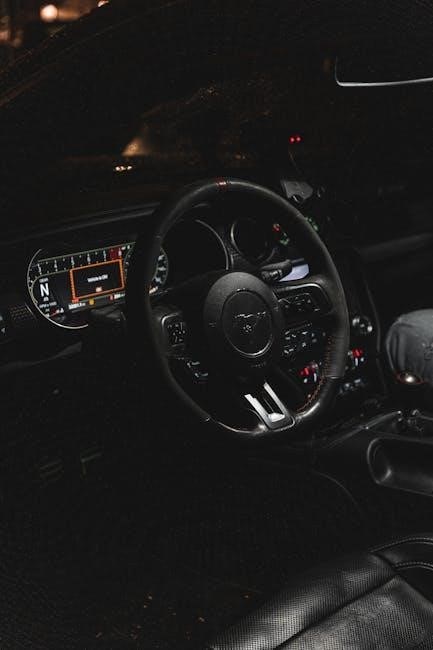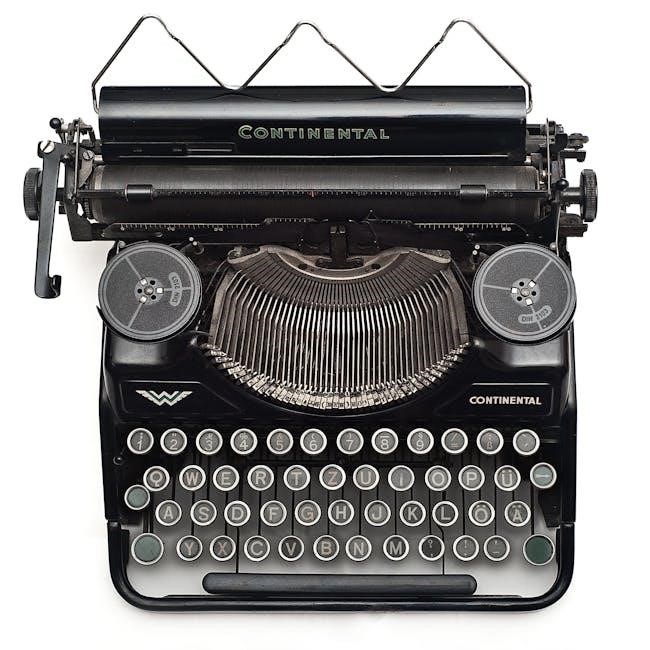e bike controller manual
E-bike Controller Manual⁚ A Comprehensive Guide
This manual provides essential information for understanding‚ installing‚ maintaining‚ and troubleshooting your e-bike controller. It covers various controller types‚ wiring‚ programming‚ safety‚ and common issues‚ supplementing your bike’s general manual; Consult online resources for additional support.
Understanding Your E-bike Controller
The e-bike controller is the central nervous system of your electric bicycle‚ a sophisticated piece of technology that manages power flow from the battery to the motor. Think of it as the brain interpreting signals from various sensors and user inputs (throttle‚ pedals‚ etc.) to deliver the desired level of assistance. Understanding its function is crucial for safe and efficient operation. The controller continuously monitors several key parameters. These include battery voltage to prevent over-discharge‚ motor current to avoid overheating‚ and wheel speed to regulate assistance based on your pedaling effort or throttle position. Different controllers offer varying levels of programmability‚ allowing customization of parameters like speed limits and power output. A basic understanding of your controller’s capabilities is essential for maximizing your e-bike’s performance and longevity. This knowledge empowers you to troubleshoot basic problems and even perform minor adjustments for optimal riding experience.
Types of E-bike Controllers⁚ A Comparison
E-bike controllers come in various types‚ each with its own characteristics and suitability for different applications. The most common categories include sine wave controllers‚ known for their smooth and quiet operation‚ and square wave controllers‚ which are generally more affordable but can produce a noticeable humming sound. Within these categories‚ further distinctions exist based on features like programmability‚ voltage compatibility (36V‚ 48V‚ etc.)‚ and current capacity (measured in amps). Some controllers integrate advanced features such as regenerative braking‚ which recaptures energy during deceleration‚ improving efficiency. Others offer programmable settings‚ enabling adjustments to parameters like maximum speed‚ power output curves‚ and PAS (pedal-assist system) sensitivity. The choice of controller often depends on the specific e-bike system‚ budget‚ and desired performance characteristics. Understanding these differences is key to selecting a controller that meets your needs and complements your e-bike’s overall design and capabilities. Always check compatibility with other components before purchase;
Connecting the Controller⁚ A Step-by-Step Guide
Connecting your e-bike controller requires careful attention to detail and adherence to safety precautions. Begin by disconnecting the battery to prevent accidental power-ups. Consult your controller’s specific wiring diagram; connections vary by model. Generally‚ you’ll need to connect wires for the battery (positive and negative)‚ motor phase wires (usually three)‚ and any additional components like a throttle‚ display‚ PAS sensor‚ and lights. Ensure that all connections are secure and properly insulated to prevent short circuits. Use the correct gauge wire for each connection to ensure proper current flow. Pay close attention to the color-coding of wires to avoid mistakes. Once all connections are made‚ carefully re-insulate any exposed wires. Before reconnecting the battery‚ visually inspect all connections one last time. Reconnect the battery and test the system in a safe‚ controlled environment. Start by briefly activating the throttle or pedal assist to verify functionality. If any issues arise‚ immediately disconnect the battery and double-check all connections. Improper connections can lead to system malfunctions or damage. Refer to the troubleshooting section if problems persist.
Troubleshooting Common Controller Issues
If your e-bike’s controller malfunctions‚ several troubleshooting steps can help identify the problem. First‚ check the battery connections; loose or corroded connections are a common cause of issues. Inspect all wiring for damage‚ ensuring no wires are frayed or shorted. A multimeter can help test voltage and continuity. If the motor doesn’t work‚ examine the motor’s phase wires for proper connection and continuity. A faulty throttle or PAS sensor can also prevent the motor from functioning; test these components with a multimeter or by replacing them temporarily with known-good parts. Overheating can cause controller failure; ensure proper ventilation around the controller. If the controller displays error codes‚ refer to the controller’s manual for specific error code definitions. If you have a LCD display‚ check for error messages. Remember to always disconnect the battery before performing any electrical tests or repairs. If the problem persists after these checks‚ consider contacting a qualified e-bike technician or the controller manufacturer for further assistance. They may have diagnostic tools or specific expertise needed to repair the controller. Keep in mind that attempting complex repairs without proper knowledge can cause further damage. Document any steps you take for troubleshooting purposes and provide as much detail as possible when seeking support.
Programming Your E-bike Controller
Programming your e-bike controller allows customization of various settings to optimize performance and riding experience. Access to programming options often involves using a specialized tool or software connected to the controller. This may require specific knowledge of the controller’s interface. Common parameters that might be adjustable include motor speed limits‚ pedal assist levels‚ and throttle sensitivity. Consult your controller’s specific manual for detailed instructions and safety precautions. Incorrect programming can damage the controller or motor. Some controllers offer advanced settings such as regenerative braking adjustments or power output curves. Be cautious when modifying these settings as they significantly impact e-bike performance. Always back up your controller’s settings before making any changes. If unsure about any aspect of the programming process‚ seek assistance from an experienced e-bike technician or refer to online forums and resources dedicated to your specific controller model. Improper programming may void warranties‚ so proceed with caution and refer to your controller’s documentation. Take detailed notes of any changes made for easy restoration of original settings if necessary. Remember‚ safety should always be the top priority when working with any electrical components of your e-bike.
Maintaining Your E-bike Controller
Regular maintenance is crucial for ensuring your e-bike controller’s longevity and optimal performance. Start by regularly inspecting the controller for any signs of damage‚ loose connections‚ or corrosion. Pay close attention to the wiring harness‚ ensuring all connectors are securely fastened. Clean the controller’s exterior using a soft‚ dry cloth to remove dirt and debris. Avoid using harsh chemicals or solvents that could damage the controller’s casing or internal components. Check the controller’s mounting for any looseness or potential vibrations that could cause damage over time. If necessary‚ tighten any screws or use vibration dampeners. Keep the controller away from excessive moisture and direct sunlight. Extreme temperatures can negatively affect its performance and lifespan. If your controller is exposed to water‚ allow it to dry completely before use to prevent short circuits. Periodically check the controller’s firmware for updates‚ as these updates may address bugs and improve its overall functionality. Always follow the manufacturer’s instructions for updating the firmware to avoid causing damage. For any significant repairs or maintenance‚ consult a qualified e-bike technician. Improper handling or repairs could compromise the safety and performance of your e-bike system. Remember‚ preventative maintenance can significantly extend the life of your controller and ensure trouble-free riding.
Safety Precautions and Warnings
Operating an e-bike requires awareness of potential hazards. Always wear a helmet and appropriate safety gear‚ such as gloves and reflective clothing‚ to protect yourself from potential injuries. Before each ride‚ inspect your e-bike‚ paying close attention to the controller and its connections. Ensure all wiring is secure and undamaged; loose or damaged wiring can lead to malfunctions or electrical hazards. Never attempt to repair or modify the controller without proper knowledge and tools. Improper repairs can create electrical hazards or damage the controller beyond repair. Avoid riding in wet or icy conditions‚ as reduced traction can lead to accidents. Be mindful of your surroundings and follow all traffic laws. Be cautious when approaching intersections or areas with pedestrians. Overloading the e-bike’s battery can significantly reduce its lifespan and potentially create a fire hazard. Always adhere to the manufacturer’s charging guidelines. The controller should only be used with compatible batteries and motors. Using incompatible components can cause damage to the e-bike’s system and may create safety risks. If you experience any unusual noises‚ smells‚ or malfunctions‚ immediately stop riding and inspect your e-bike. Never continue riding if you suspect a problem with the controller or any other e-bike component. Your safety is paramount; always prioritize caution and responsible riding practices. Consult your e-bike’s user manual for further safety guidelines specific to your model.
Understanding Controller Components and Wiring
E-bike controllers are complex electronic devices managing power flow from the battery to the motor. Key components include MOSFETs (Metal-Oxide-Semiconductor Field-Effect Transistors)‚ which act as high-power switches controlling motor power. A microcontroller‚ the controller’s “brain‚” processes signals from various sensors and user inputs (throttle‚ PAS). These sensors monitor parameters like speed‚ pedal cadence (PAS systems)‚ and battery voltage. The controller incorporates circuitry for current limiting‚ preventing motor overload and protecting the battery; A communication interface (e.g.‚ CAN bus) allows communication with the display unit‚ providing speed‚ battery level‚ and other information. Wiring harnesses connect the controller to the battery‚ motor‚ display‚ throttle‚ PAS sensor (if applicable)‚ and lights. The battery’s positive and negative terminals connect directly to the controller‚ providing power. Thick wires connect the controller to the motor’s phases‚ carrying high current. Thinner wires carry signals from sensors and user inputs. Accurate wiring is crucial; incorrect connections can lead to malfunctions or damage to components. Color-coded wires typically follow a standard‚ but always consult the specific controller’s wiring diagram. The controller may also include fuses or circuit breakers as safety mechanisms. Understanding these components and their connections is essential for proper installation‚ maintenance‚ and troubleshooting. Refer to the specific wiring diagram for your e-bike’s controller model for detailed information.
Advanced Controller Settings and Customization
Many e-bike controllers offer advanced settings accessible through programming tools or specialized displays. These settings allow for fine-tuning the e-bike’s performance and behavior. Commonly adjustable parameters include the maximum motor current‚ which impacts acceleration and hill-climbing ability. Adjusting the current limit too high risks overheating the motor and controller‚ while setting it too low may reduce performance. The speed limit can also often be altered‚ but modifications should respect local regulations. Some controllers permit customization of the assistance levels in PAS (pedal assist system) modes‚ allowing riders to adjust the level of motor support. Advanced controllers might allow adjustments to regeneration braking strength‚ recovering energy during coasting or braking. Other customizable options might include throttle response sensitivity‚ influencing how quickly the motor reacts to throttle input. Some controllers allow for configuring the start-up behavior of the motor‚ such as the number of speed sensor pulses required before motor activation. Accessing and modifying these settings often requires specialized tools or software‚ and incorrect changes can damage the controller or compromise safety. Consult your controller’s specific documentation or seek guidance from experienced technicians before attempting any advanced configuration. Improper adjustments can lead to unexpected behavior or malfunction‚ potentially resulting in accidents. Always prioritize safety and ensure any changes align with legal speed limits and e-bike regulations.
Different Controller Brands and Models
The e-bike market features a wide array of controller brands and models‚ each with its own specifications and features. Popular brands include Bafang‚ Kelly‚ and Crystalyte‚ known for their reliability and performance in various e-bike applications. Bafang controllers‚ for instance‚ are frequently found in mid-drive systems‚ renowned for their power and torque. Kelly controllers are often favored for their versatility and suitability in DIY conversions‚ offering a range of configurations and power levels. Crystalyte controllers are frequently selected for their robust construction and high-power output‚ often employed in high-performance e-bikes. These are just a few examples‚ and numerous other manufacturers produce controllers with varying capabilities and price points. When selecting a controller‚ factors like the motor type (brushless DC‚ geared hub)‚ voltage requirements (36V‚ 48V)‚ and desired power output are crucial considerations. The controller’s interface and display also play a role; some offer basic power and speed indicators‚ while others incorporate advanced features such as PAS levels‚ trip odometers‚ and error codes. The controller’s physical size and mounting options should align with the e-bike’s frame geometry. Before purchasing a controller‚ verify its compatibility with your specific motor and battery system to avoid potential issues. Always refer to the manufacturer’s specifications and documentation for detailed information on compatibility and operational parameters. Improper controller selection can lead to performance limitations‚ damage to components‚ or safety hazards.
Finding and Using Your E-bike’s Manual
Locating and utilizing your e-bike’s manual is crucial for understanding its specific components and operating procedures. The manual typically contains detailed information about the controller‚ including its specifications‚ wiring diagrams‚ and troubleshooting guides. Manufacturers often provide manuals in printed form alongside the e-bike or make them available for download from their websites. Searching online using the e-bike’s make‚ model‚ and “manual” keywords is usually effective. If the manufacturer’s website doesn’t provide a downloadable manual‚ consider contacting their customer support for assistance. Online forums and communities dedicated to e-bikes can also be valuable resources; users often share manuals or provide links to them. Once obtained‚ carefully review the manual’s sections related to the controller. Pay close attention to wiring diagrams‚ as they illustrate how the controller connects to the battery‚ motor‚ display‚ and other components. The manual will likely explain how to program the controller‚ adjust settings like PAS levels or maximum speed‚ and address common issues or errors. Understanding the controller’s functions‚ limits‚ and maintenance requirements is essential for safe and efficient e-bike operation. The manual may also contain safety warnings and precautions‚ which should be followed diligently to prevent accidents or damage to the e-bike. Remember‚ the manual is a valuable tool for ensuring proper use and extending the life of your e-bike’s controller and overall system.
Online Resources and Community Support
The internet offers a wealth of resources for e-bike owners seeking information about their controllers. Numerous websites dedicated to e-bikes provide manuals‚ troubleshooting guides‚ and technical specifications for various controller models. These resources often include diagrams‚ videos‚ and user forums where individuals can share experiences and solutions. Searching online using the controller’s brand name and model number often yields relevant information‚ including user manuals‚ firmware updates‚ and compatibility details. Many manufacturers offer online support portals with FAQs‚ troubleshooting tips‚ and downloadable resources. Participating in e-bike online communities and forums can provide access to a supportive network of experienced users. These platforms allow you to ask questions‚ share problems‚ and receive assistance from other e-bike enthusiasts who may have encountered similar issues. Remember to be specific when describing your problem and provide relevant details‚ such as your controller’s make and model‚ e-bike type‚ and any error messages displayed. Reviewing online forums before contacting customer support can often save time by providing answers to common questions or directing you to relevant troubleshooting steps. Always be cautious about the information found online‚ ensuring that it comes from reliable sources. Prioritize information from official manufacturer websites‚ reputable e-bike retailers‚ or established online communities with active moderation. Utilizing these online resources and community support can significantly enhance your understanding of your e-bike controller and help in resolving any challenges you encounter.










Leave a Comment